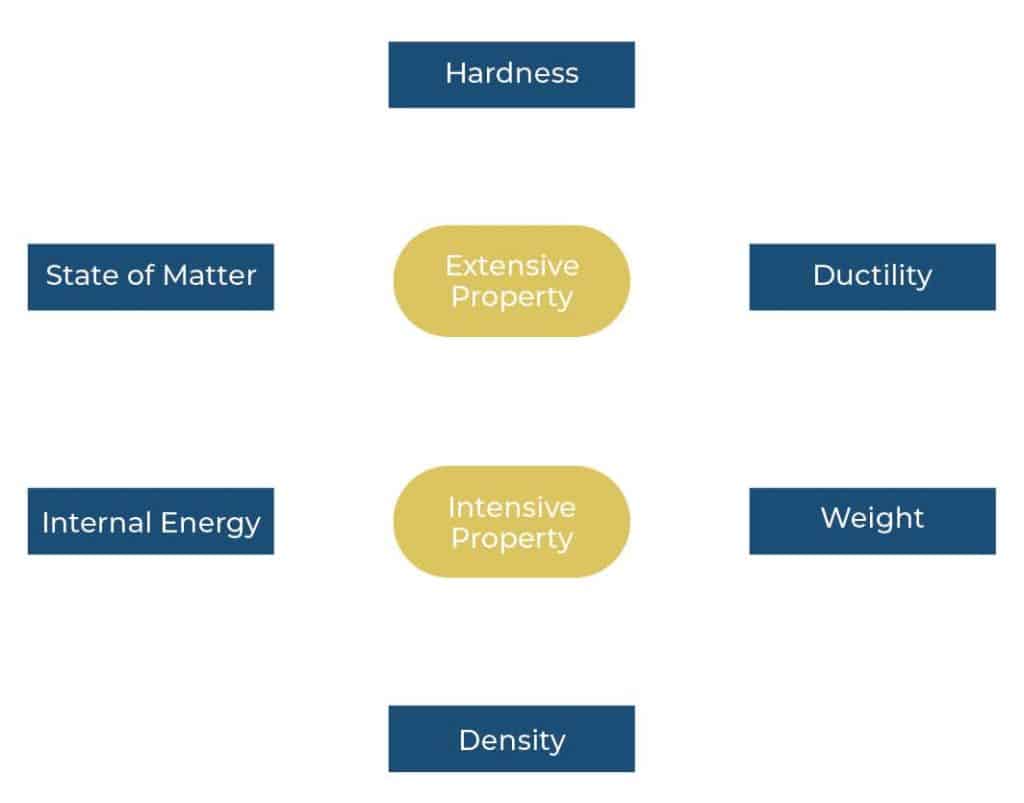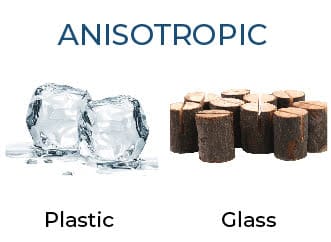Physical Properties of Matter
Grade 6 Science Worksheets
Physical properties of matter are characteristics that can be observed or measured without changing the identity of the substance. These properties include physical characteristics such as density, color, melting and boiling points, state of matter, hardness, malleability, conductivity, and many more.
Table of Contents:
- Physical Properties of Matter
- Intensive and Extensive Properties of Matter
- Isotropic and Anisotropic Physical Properties of Matter
- FAQs
Physical Properties of Matter - Grade 6 Science Worksheet PDF
This is a free printable / downloadable PDF worksheet with practice problems and answers. You can also work on it online.
|
Untimed | |
Sign up with your email ID to access this free worksheet.
"We really love eTutorWorld!"
"We really love etutorworld!. Anand S and Pooja are excellent math teachers and are quick to respond with requests to tutor on any math topic!" - Kieran Y (via TrustSpot.io)
"My daughter gets distracted easily"
"My daughter gets distracted very easily and Ms. Medini and other teachers were patient with her and redirected her back to the courses.
With the help of Etutorworld, my daughter has been now selected in the Gifted and Talented Program for the school district"
- Nivea Sharma (via TrustSpot.io)
Physical Properties of Matter
Physical Properties can be used to identify and classify different types of matter and to predict how the matter will behave in different situations. Some properties are intensive and do not depend on the amount of matter present, while others are extensive and depend on the amount of matter present. Understanding these properties is essential for many fields, such as chemistry, physics, materials science, and engineering.
Intensive and Extensive Properties of Matter
Intensive and extensive properties are two types of physical properties of matter.
Intensive properties do not depend on the amount of matter present. These are the same for a sample of any size. Examples of intensive properties include:
- Density: The ratio of mass to volume of a substance, regardless of the amount present. For example, the density of gold is 19.3 g/cm3, regardless of how much gold is present.
- Melting point: The temperature at which a substance changes from a solid to a liquid, regardless of the amount present. For example, the melting point of iron is 1538 °C, regardless of how much iron is present.
- Color: the visual perception of the electromagnetic waves a substance reflects or emits, regardless of the amount present. For example, copper sulfate is blue in color, regardless of how much is present.
On the other hand, Extensive properties are properties that do depend on the amount of matter present. They vary with the size or amount of the sample. Examples of extensive properties include:
- Mass: the quantity of matter in an object, it depends on the size of the sample, for example, a piece of wood has more mass than a small wood chip.
- Volume: the amount of space occupied by an object, it depends on the size of the sample, for example, a gallon of water has a greater volume than a pint of water.
- Energy: the ability to do work, it depends on the size of the sample, for example, a gallon of gasoline has more energy than a pint of gasoline.

In summary, Intensive properties are independent of the amount of matter present and Extensive properties depend on the amount of matter present.
“There have been times when we booked them last minute, but the teachers have been extremely well-prepared and the help desk at etutorworld is very prompt.
Our kid is doing much better with a higher score.”
6th Grade Tutoring
eTutorWorld offers Personalized Online Tutoring for Math, Science, English, and Standardised Tests.
Our Tutoring Packs start at just under $22.49 per hour, and come with a moneyback guarantee.
Schedule a FREE Trial Session, and experience quality tutoring for yourself. (No credit card required.)
Isotropic and Anisotropic Physical Properties of Matter
Isotropic properties are those that are the same in all directions. An isotropic material has the same physical properties regardless of the direction in which the measurements are taken. Examples of isotropic properties include:
- Density: the ratio of mass to volume is the same in all directions. For example, the density of water is 1 g/cm3 in all directions.
- Thermal conductivity: the ability of a material to conduct heat is the same in all directions. For example, the thermal conductivity of copper is 401 W/(m.K) in all directions.
Anisotropic properties are those that vary depending on the direction in which the measurements are taken. An anisotropic material has different physical properties in different directions. Examples of anisotropic properties include:

- Elasticity: the ability of a material to return to its original shape after being deformed is different in different directions. For example, the elasticity of wood is different along the grain than across the grain.
- Magnetic susceptibility: the ability of a material to be magnetized is different in different directions. For example, the magnetization of a ferromagnetic material is different along the easy axis than across the hard axis.
- Optical properties: the ability of a material to transmit or reflect light is different in different directions. For example, the refractive index of a crystal is different along different crystal planes.

In summary, isotropic properties are the same in all directions, while anisotropic properties vary depending on the direction of measurement. Isotropic materials are more predictable in their behavior and are often easier to model and simulate, while anisotropic materials can be more complex and challenging to study.
Do You Stack Up Against the Best?
If you have 30 minutes, try our free diagnostics test and assess your skills.
Physical Properties of Matter FAQS
What are the physical properties of matter?
Physical properties of matter are characteristics that can be observed or measured without changing the identity of the substance. Examples include density, colour, melting and boiling points, state of matter, hardness, malleability, and conductivity.
How are physical properties used?
Physical properties can be used to identify and classify different types of matter, and to predict how the matter will behave in different situations. They are essential for many fields such as chemistry, physics, materials science, and engineering.
What is the difference between intensive and extensive properties?
Intensive properties are properties that do not depend on the amount of matter present, such as density and melting point. Extensive properties depend on the amount of matter present, such as mass and volume.
What are isotropic and anisotropic properties?
Isotropic properties are the same in all directions, while anisotropic properties vary depending on the direction of measurement.
Can physical properties change?
Some physical properties can change with temperature, pressure or other external factors, while others are constant. For example, the density of water is constant at room temperature, but it changes when it freezes or boils.
How can we measure physical properties?
Physical properties can be measured using a variety of techniques, such as weighing, measuring volume, and using instruments like thermometers, barometers, and colorimeters.

Kathleen Currence is one of the founders of eTutorWorld. Previously a middle school principal in Kansas City School District, she has an MA in Education from the University of Dayton, Ohio. She is a prolific writer, and likes to explain Science topics in student-friendly language. LinkedIn Profile
Affordable Tutoring Now Starts at Just $22.49
eTutorWorld offers affordable one-on-one live tutoring over the web for Grades K-12. We are also a leading provider of Test Prep help for Standardized Tests (SCAT, CogAT, MAP, SSAT, SAT, ACT, ISEE, and AP).
What makes eTutorWorld stand apart are: flexibility in lesson scheduling, quality of hand-picked tutors, assignment of tutors based on academic counseling and diagnostic tests of each student, and our 100% money-back guarantee.
Whether you have never tried personalized online tutoring before or are looking for better tutors and flexibility at an affordable price point, schedule a FREE TRIAL Session with us today.
*There is no purchase obligation or credit card requirement
Grade 6 Science Worksheets
- Inquiry process
- Nature of Science
- Scientific Inquiry
- Inquiry, Analysis and Problem Solving
- Ethical Practices
- Science and Society
- Biotic and Abiotic Factors
- Impact of Organisms
- Adaptation
- Spheres of Earth
- Natural Resources
- Environmental Issues
- Conservation of Earth
- Understanding Technology
- Abilities To Do Technological Design
- Structure of Earth
- Solar System
- Rocks and Fossils
- Earth Systems
- Plate Tectonics
- Evolution
- Magnetic Field of Earth
- Geologic Time
- Materials and Processes That Shape a Planet
- Astronomy
- Ecology
- Energy
- Kinetic and Potential Energy
- Energy Transfer
- Matter and its Structure
- States of Matter
- Physical and Chemical Changes
- Force and Motion
- Electricity and Magnetism
- Wave Interactions
- Sound
- Light
- Introduction to Life Science
- The Origin & History of Life On Earth
- Plant and Animal Cells
- Parts of a Cell
- The Cell Cycle
- How Living Organisms Get Energy
- Classification of Organisms
- How Plants Grow & Reproduce
- The Human Respiratory System
- The Human Cardiovascular System
- The Human Digestive System
- The Human Endocrine Systems
- The Human Nervous System
- The Human Muscular System
- The Human Skeletal System
IN THE NEWS

Our mission is to provide high quality online tutoring services, using state of the art Internet technology, to school students worldwide.
Online test prep and practice
SCAT
SSAT
ISEE
PSAT
SAT
ACT
AP Exam
Science Tutoring
Physics Tutoring
Chemistry Tutoring
Biology Tutoring
Math Tutoring
Pre-Algebra Tutoring
Algebra Tutoring
Pre Calculus Tutoring
Calculus Tutoring
Geometry Tutoring
Trigonometry Tutoring
Statistics Tutoring
Quick links
Free Worksheets
Fact sheet
Sales Partner Opportunities
Parents
Passive Fundraising
Virtual Fundraising
Our Expert Tutors
Safe and Secure Tutoring
Interactive Online Tutoring
After School Tutoring
Elementary School Tutoring
Middle School Tutoring
High School Tutoring
Home Work Help
Math Tutors New York City
Press
©2022 eTutorWorld Terms of use Privacy Policy Site by Little Red Bird
©2022 eTutorWorld
Terms of use
Privacy Policy
Site by Little Red Bird










